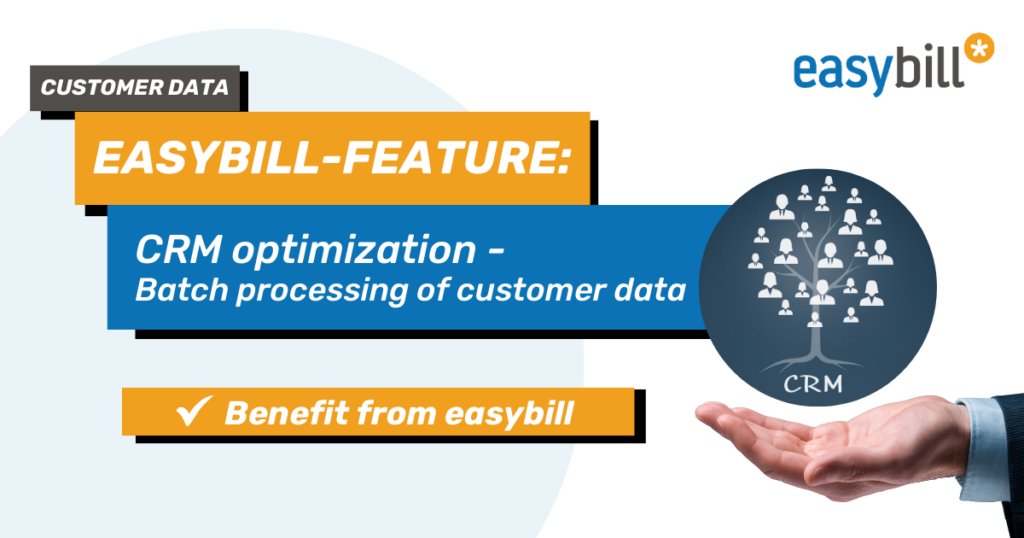
Large companies in particular often have an extensive customer file. However, if changes need to be made, you would theoretically have to edit each customer master individually. Until now, this was done in an accelerated process by exporting the customer data, editing it in a third-party program and then importing the new data into easybill.
Today, however, we would like to introduce you to easybill’s latest feature of batch processing for customer data. Batch processing makes it much easier to process large data sets in just a few clicks, making your day-to-day work easier.
What is batch processing in easybill?
Any change that affects more than a single data record can mean an immense amount of work for you as an entrepreneur. It takes up time that you could be using for other things. Since easybill always supports you in your day-to-day work, there is the so-called batch processing. Here, several data records can be changed in one go.
Another advantage is that you can also use filtering to select data records according to your desired criteria in the account. The various options offer you plenty of scope here.
New batch processing for customer data
Batch processing was previously available for processing invoice items, but also for correcting invoices. The latest feature now also allows you to process your customer data in batches.
For example, if you want to move several customers to a different customer group at once or change a price group, you can use the filters to first select all the customers concerned. You then enter your change request and leave the correction to the system. Batch processing allows large amounts of data to be changed in a very short period of time. You will not be affected in your account during this time.
Read also:
Put an end to confusion: we explain technical terms in easybill
The One-Stop-Shop (OSS) for VAT in the EU: making cross-border business easier
E-Invoicing obligation for craftsmen: The most important facts about the changeover as of 2025




